What to Pack for Winter Adventures in Lapland
Learn what to pack for your Lapland winter adventure. Stay warm, travel smart, and enjoy the Arctic snow.
Our staff will respond to your query promptly and provide detailed information to your questions.
12 days - Classic Norwegian Coastal Voyage with an Astronomy expert
Voyage the beautiful Norwegian Coast from Bergen to Kirkenes return, accompanied by lecturers from the Royal Astronomical Society (RAS). This spectacular voyage examines the inseparable links between Norway's rich heritage and the sea, the ultimate way to experience the full majesty and culture of Norway's coastline.

As a Certified B Corporation, 50 Degrees North has designed this tour using handpicked local hoteliers and suppliers who share our ethos of delivering services and activities of high social and environmental standards.
The CO2-e per person per day of all tours is carefully measured following each season. We fully offset all emissions of our tours on your behalf, and we constantly look at ways to reduce emissions where possible.
Norwegian Ferry boat
Click here to see the Havila fleet - Norwegian Coastal Voyages
Flights, travel insurance, luggage handling & optional excursions.
The voyage starts in Bergen, the colourful capital of western Norway, where you can explore the UNESCO-listed Bryggen warehouses, ride the Fløibanen funicular for scenic views, indulge in fresh seafood at the fish market, or wander the lively harbour's charming streets and quays.
On the morning of the second day, you can greet the Havila Voyages headquarters near Torvik before arriving in Ålesund, known for its art nouveau architecture. Marvel at the inspiring architecture in the Apotekergate and Kongensgate pedestrian precinct, perfect examples of the Art Nouveau style. Don’t miss out on the view from Mount Aksla but beware, there are 418 steps to the top!
It is morning when you dock in the historic city of Trondheim, which was founded over a thousand years ago. The Nidaros Cathedral is the city's major landmark. Furthermore, it is Norway's national shrine and one of the largest cathedrals in northern Europe. After your visit here, the voyage continues towards northern Norway.
As you journey further north, you'll celebrate crossing the Arctic Circle with a ceremony before exploring the Arctic regions. Encounter the awe-inspiring power of nature with a visit to northern Scandinavia's largest glacier, see the world's strongest tidal current, and spot the majestic sea eagles. In the evenings, you can explore the Lofoten fishing villages, admire the steep mountains, and learn about Viking history and heritage.
As you continue through the narrow fjords and wild mountains, you'll arrive in Tromsø, a city with a rich history associated with hunting, fishing, and polar expeditions. Tromsø is also a gateway to the land of the Sami, Norway's indigenous people. Meeting the Sami and learning about their culture, including their unique connection with reindeer, is a truly unforgettable experience.
This is as far north as you can get — by land and sea. For many, the visit to the North Cape is a highlight and a goal for voyages along the Norwegian coast. Up here, in the polar landscape, nature is at its harshest and most desolate, but between bare plains and rugged cliffs, people cling on and reap nature's bounty – and you can have a taste of the catch. How about some king crab?
Congratulations, you have now reached the easternmost point of your voyage! The border with Russia is only a few kilometres away, and you may notice that road signs in Kirkenes are written in both Norwegian and Russian. Consider joining one of our excursions to visit the border, or venture to the Snowhotel where everything is crafted from ice and snow for a unique and memorable experience.
As we sail west and south, the polar landscape transforms, giving way to towering peaks. In the evening, we'll arrive in Tromsø where you can attend a midnight concert in the Arctic Cathedral or stroll under the mesmerizing Northern Lights. Explore the city's lively nightlife scene, known as "The Paris of the North".
Optional excursions such as the Midnight concert can be booked on board.
Next, you'll return to the stunning and picturesque Lofoten Islands, where you'll find a mix of wild and idyllic scenery. Along the coastline, you'll discover chalky, white, and sandy beaches alongside charming fishing villages, which still thrive on a vibrant fishing industry. The locals rely on coastal ships for everyday transportation. Weather permitting, we'll venture into the narrow Trollfjord, which offers an excellent chance to spot majestic sea eagles.
At this juncture of your journey, you have ventured so far south that we have left the polar land behind and crossed the Arctic Circle. However, during winter, you may still witness the Northern Lights illuminating the night sky. As you sail, you'll pass by numerous small islands, islets, and skerries, including the unique Torghatten mountain, which features a hole in its centre.
You'll sail through the vast Trondheim fjord, flanked by rolling farmland on either side, before reaching the coast and the open sea once more. If you wish to disembark, Kristiansund offers the opportunity for a scenic bus tour along the Atlantic Ocean Road, considered one of the world's most beautiful drives. The road winds along islets and skerries, and after the tour, you can rejoin us in Molde.
On the final day of your journey, you'll voyage through a varied coastal landscape that features rugged rocky mountains and an intricate network of straits and waterways between countless islands. The magnificent fjords and glaciers are located further inland. The voyage concludes in Bergen, and we can help with any additional nights in Bergen or activities.
Price from per person, twin share for an inside cabin. The Coastal Cruise price fluctuates daily depending on demand and so this price can only be indicative as we will need to price based on your day of travel. PLEASE NOTE: This is a FROM price. Any discounts will be applied to your personal request.
You can pre-book your optional excursions with us. However, you can also wait until you are onboard and do it then - however, there is a maximum number and they can book out. It is not possible to pre-book within 2 weeks prior to departure. Excursions and their contents are subject to maximum/minimum numbers and weather/local conditions.
NOTE: Havila offer a Northern Lights promise - that the lights will make an appearance during your 12 day Havila voyage in Norway, that if they don't, Havila give you another 6 or 7-day Classic Voyage inside cabin with half board FREE OF CHARGE *Please consider that the lights can be quite often hard to see or fleeting and not as the photos appear.
Your lecturers on board:
Ian Ridpath is a respected writer and lecturer in the fields of astronomy and space, known internationally.
He serves as the editor of the esteemed Oxford Dictionary of Astronomy and has penned a popular series of night sky guides tailored for beginners. As a valued member of the Royal Astronomical Society’s outreach team, Ian has been guiding enthusiasts to witness the Northern Lights in Norway since 2010.
John Zarnecki is a distinguished English space scientist.
Zarnecki's expertise has not gone unnoticed; he has been awarded the Royal Astronomical Society's Gold Medal and has served as both its Vice-President and President since 2016. He has held notable positions, including Director of the International Space Science Institute in Switzerland and Professor of Space Science at the Open University. With his extensive involvement in significant space probe missions, he is a leading authority on space debris, cosmic dust, and impacts.
IMPORTANT NOTE: Weather conditions may occasionally affect certain activities, and as a result, the schedule may be adjusted to ensure the best possible experience for all guests. Activities might vary slightly in their duration or location due to the weather and local conditions. Any activities that are unable to be re-scheduled due to weather conditions, will be refunded as a general practice, as determined by the activity provider.
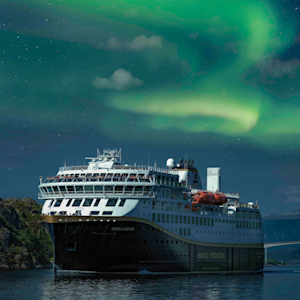
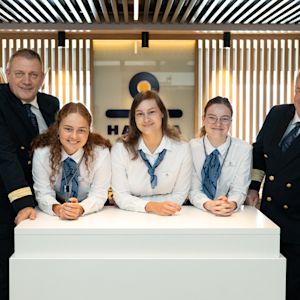
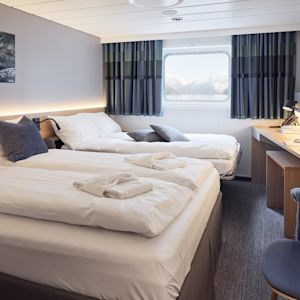
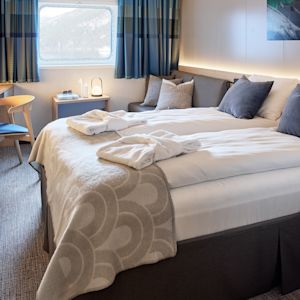
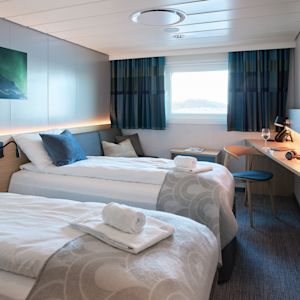

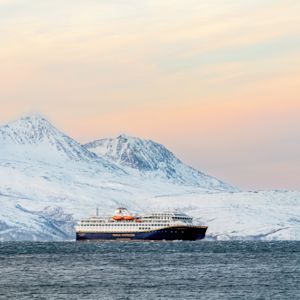
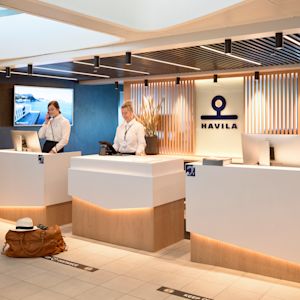
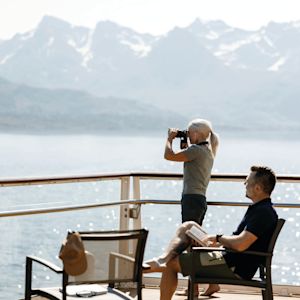
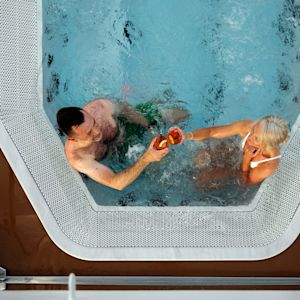


Learn what to pack for your Lapland winter adventure. Stay warm, travel smart, and enjoy the Arctic snow.

Norway is well known as a 'Northern Lights' hotspot and there is good reason. Above the Arctic Circle, many cities in Norway offer terrific chances to see the lights between mid-September to early April.
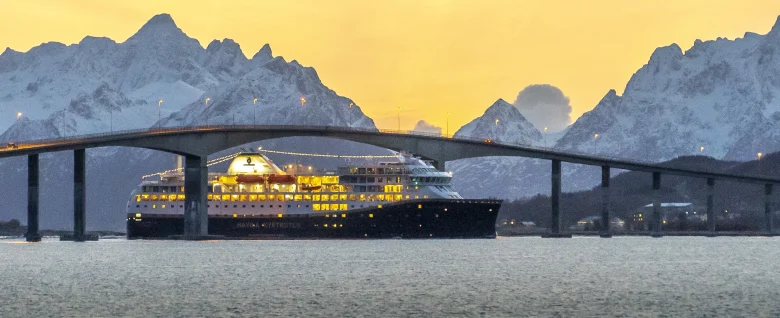
Our 'helpful hints' guide to your Norwegian Coastal Voyage with Havila. Many of our Scandinavian staff have travelled on a coastal voyage and offer detailed explanations to how it works on-board.
Travel insurance is compulsory for all tours with 50 Degrees North. The safety of our travellers, staff and operators is a major priority of 50 Degrees North. With an operational office in Norway, 50 Degrees North has access to an up-to-the-minute flow of information regarding the countries we work in. We are also in regular contact with the various operators we use. Their in-depth knowledge and understanding of their various areas is vital.
Norwegian coastal ships are working vessels operating a regular service to a set timetable, and a set itinerary, carrying goods, vehicles and foot passengers between ports, by night and day, as an integral part of Norwegian daily life (some noise may be experienced during docking and loading/unloading). It may very occasionally be necessary to omit or curtail stops due to weather or other conditions. Some stops may be very short and some are at night. As Christmas approaches itineraries may change in order for ships to host dinners and celebrations for local communities. Please ensure you are back onboard by sailing time, especially if the ship has arrived late, as it may leave as scheduled to make up time.
The departure time is advertised at the gangway and vessels are NOT able to wait for passengers who are late. If you miss the ship it is your responsibility to make arrangements to rejoin the voyage at the next possible stop or return home.
This is generally available 24 hours a day serving beverages, sandwiches and a small selection of hot and cold dishes. On some departures the catering service at night will be managed by the reception staff.
If you are travelling by car further information on vehicles and parking at ports is available from Hurtigruten. Access to the vehicle deck is only permitted when the ship is moored.
Ships generally accept VISA, American Express, Eurocard, Diners Club and JBC International, plus most currencies.
We recommend that passengers acquire a cruise card to make payments on board. This may be obtained from reception onboard and used to make payments throughout the ship. They accept credit cards or cash as a deposit. You need to get the bill sorted on the last night to be sure it is finalised.
Special diets, such as vegetarian must be ordered well before departure.
All ships have lifts and cabins for disabled guests. People with severe disabilities or who are unable to take care of themselves must be accompanied by a carer.
The ships are licensed to sell drinks onboard, however please note the price of alcohol in Norway due to heavy taxes. The water package can be included into your voyage at a small extra cost
220 V AC 2 pin, and a continental adaptor is required.
Available on all ships.
Be sure to bring some swimming attire for the jacuzzi!
All ships offer internet access via satellite. In most harbours, mobile/cellular networks (3G) are available if bringing your own PC and a mobile access subscription. The wireless coverage varies from ship to ship and will be improved yearly. The passengers have to contact the reception on board for information on how to get access to the internet (free of charge). No internet access in the cabins (except in some suites). Internet cafe (if present), with minimum 2 PCs.
Kystruten ships are working vessels operating a regular service to a set schedule, carrying vehicles, cargo and foot passengers by day and night (some noise may be noticed during docking or loading). Some stops are short and/or are during the night. It may occasionally be necessary to omit or curtail visits due to weather/local conditions, and you will be notified of this.
Most ships have laundry facilities with washing machines and tumble dryers. Tokens may be purchased from reception.
A daily baggage service is available in Bergen from the airport and selected city-centre hotels to the Hurtigruten terminal. For groups, luggage handling must be agreed with Hurtigruten prior to travel. This in not included in the price of your voyage.
Meals are served at set times in the restaurant. In high season, times may vary if there are several sittings. A breakfast buffet (open seating) with a wide selection is served 07.30hrs -10.00hrs. A buffet lunch (open seating) with hot and cold dishes and desserts is usually served 12hrs-14.30hrs and a three course set dinner 18.30hrs-21.00hrs. In Bergen a buffet is usually served 18.30hrs-21.30hrs. Exact times are given on board. Tea and coffee facilities are only provided in cabins above U Class. Tea and coffee are available free of charge after lunch and dinner but can be purchased around the clock. Please read our news articles about dining on board Hurtigruten.
It is recommended that pets are not brought on long journeys and special rules apply to the transport of animals; contact us for further information. We do however welcome guide dogs on board.
As there are only short distances between ports there is neither a doctor nor a pharmacy on board.
Most ships have a playroom except MS Midnatsol and MS Trollfjord.
Do not forget to bring your binoculars, camera and/or a video camera. Take practical, warm and windproof clothing for going out on deck. Smart, but casual clothes are recommended on board. Good comfortable footwear is vital for excursions.
Souvenirs, knitwear, postcards, DVDs of the journey, stamps and a small supply of toiletries are sold on board.
Smoking is not permitted in cabins or public areas. It is allowed up on the open deck but prohibited at all times when the ships are in port.
For reasons of safety it may sometimes be necessary to keep cabin ventilators/port-holes obscured.
All ships have payphones and a fax machine. There is generally good coverage for mobile phones.
There is a tour leader on board all year round. On some departures this service is managed by reception. External tour leaders (groups) are requested to contact the reception for information on practical details.
We can offer transfers in Bergen, Trondheim and Kirkenes.
There is a safe in reception. Ships accept no responsibility for valuables and money kept in cabins.
When arriving at night disembarking passengers are woken between half an hour and one hour before arrival.
Temperatures usually vary between 2°C and -10°C in winter. Summer temperatures in northern Norway vary between 10°C and 30°C depending on latitude.
On your final morning of your voyage, be sure to take everything with you when you go for breakfast. The ship gets prepared for the next voyage and your rooms will be cleaned promptly. You may be charged for re-entry.
You can pre-book your optional excursions with us. However, you can also wait until you are onboard and do it then - however, there is a maximum number and they can book out. It is not possible to pre-book within 2 weeks prior to departure. Excursions and their contents are subject to maximum/minimum numbers and weather/local conditions. During quieter months, some excursions may not get the numbers required so please ask us when booking about the minimum numbers needed for each excursion.
In winter, Norway becomes a picturesque world of snow and ice. As beautiful as this is, it's also incredibly cold. Here's how to dress for travel near the arctic during the coldest parts of the year:
Underwear
One of the most effective ways to stay warm in cold weather is to invest in a good set of thermal underwear. This bottom layer helps trap the heat your body produces, and effectively uses your own warmth as a radiator.
When it comes to choosing long underwear, you have to give the material serious thought. Most thermal underwear is made of either wool or high-tech yarn. To be truly warm, you'll want to go for something that's designed with channels that trap your heat while also wicking away any moisture you produce. Damp clothes in the arctic is a recipe for disaster, so focus on materials that will keep you warm and dry.
Your long underwear should cover your entire torso, and your arms and legs down to your wrists and ankles. You might also find versions of this layer that include a turtle neck, which gives you an extra protected area.
Indoor layers
These are the layers you'll have exposed when you're out of the elements - basically, this layer is your chance to show off your sense of style. Norwegian fashion is the epitome of form meets function, which means that sweaters and other knitwear make up the popular look during the cold season.
Go for choices that reflect your personality while still keeping you nice and warm. If you're a fan of skirts, make sure you've invested in a good pair of knit leggings that will keep you warm. However, it's a better bet to go for pants if you're really focused on comfort. Fleece-lined jeans are a great choice for the coldest time of year.
It might not be a bad idea to have a fashionable short-sleeved shirt between your bottom layer and this one, just in case you go into a particularly warm location. It's easy to end up overheated when you're wearing multiple insulating layers, so you'll thank yourself if you have an opportunity to shed one in a well-heated store or restaurant.
Outdoor layers
Depending on how far north you're heading, you'll want to be well-stocked in outer layers. For your upper half, wear a water and windproof shell or jacket, and then a full winter coat to wear over that. At least one of these should have a hood, but it's better if they both do.
If you're going to be trekking through lots of snow, or if you're just going to be in freezing weather for an extended period of time, you may also want to bring a layer of waterproof pants. Although you may feel awkward shedding and replacing these pants when you transition from indoors to outdoors, your legs will appreciate the extra protection.
Hands and feet
Your hands and feet are two of the most important parts of your body to protect in cold weather. Along with your ears and nose, these are the parts of your body most likely to end up with frost bite. That's why you need to have good socks, shoes and gloves when you're spending time in or near the arctic.
Wool, moisture-wicking socks are your best bet for keeping your toes warm when walking through snow and sleet. You'll also want to invest in a pair of heavy-duty snow boots. Good waterproof boots will keep your feet from getting soaked, and help you keep traction on slippery surfaces.
When it comes to your hands, you have a couple of good options. Your best bet for warmth is insulated mittens, as these trap the heat from your fingers. However, mittens aren't particularly functional. A good alternative that won't limit dexterity is a good pair of knit gloves. If you can, find a pair that will work with a touch screen. This way, you won't have to partially remove your glove if you need to make a phone call.
Accessories
In addition to your coat and pants, you're going to want to pack plenty of warm accessories. Knit scarves and hats will help you protect your face and head from the chill. You'll also want to bring a warm pair of ear muffs to keep this sensitive area covered. Remember, your nose and ears are particularly at risk for developing frost bite, so you'll want to take extra care to make sure they're safe and warm.
Other Packing Tips
Consider getting a waterproof lining for your suitcase, since you'll probably be carrying it through snowy or wet conditions. If you have any electronics in your bag, these should absolutely be kept in a waterproof container for protection.
It's a good idea to bring an extra hat, scarf and piece of ear protection when you're out and about. These pieces are easy to drop - you'll appreciate having a spare on hand if your hat ends up covered in snow.
Although for most trips it's best to bring as little as possible, it's not a bad idea to err on the side of bringing too much when it comes to the arctic. You can always remove layers, but you can't add what you don't have.
_Information supplied by Hurtigruten USA. _